Hand embroidery designs offer a creative way to express individuality through traditional and modern patterns․ Easily downloadable free PDFs make these artistic styles accessible to everyone․
What is Hand Embroidery?
Hand embroidery is a traditional art form that involves creating decorative designs on fabric using a needle and thread․ It allows for unparalleled creativity, as embroiderers can craft intricate patterns, floral motifs, and personalized designs․ This timeless craft is perfect for embellishing clothing, home decor, or standalone art pieces․ With free PDF patterns readily available, beginners and experts alike can explore various styles, from classic to contemporary․ Hand embroidery is a versatile and rewarding hobby that combines precision, patience, and artistic expression․
Why Choose Free PDF Designs?
Free PDF designs offer a cost-effective and convenient way to explore hand embroidery․ They provide instant access to a wide variety of patterns, allowing embroiderers to experiment with different styles without financial commitment․ Many official brand websites and embroidery communities offer high-quality, downloadable PDFs, making it easy to find inspiration and start new projects․ These designs cater to all skill levels, from simple motifs for beginners to intricate patterns for experienced embroiderers․ With free PDFs, creativity knows no bounds, enabling anyone to personalize their projects effortlessly․
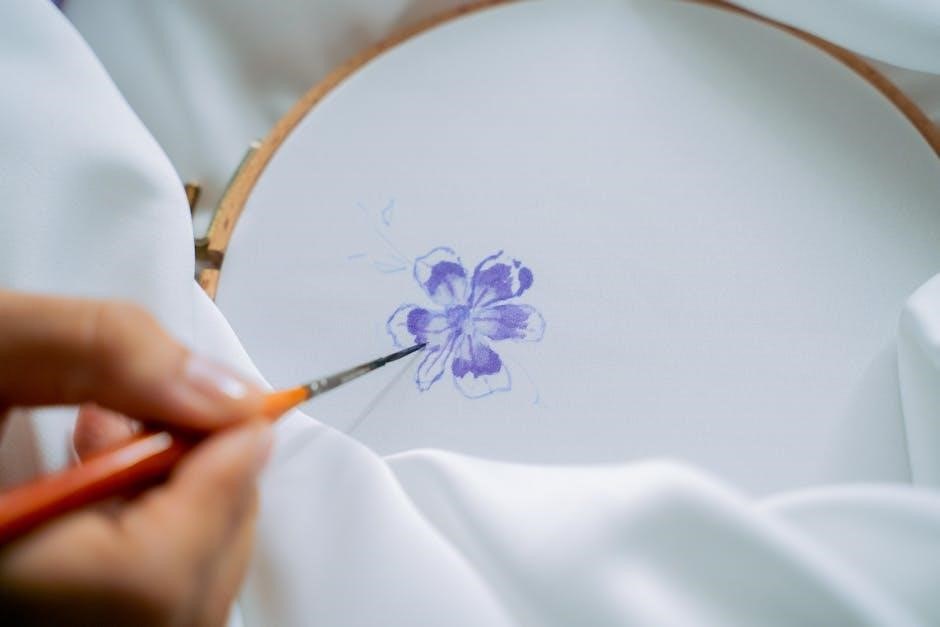
Popular Sources for Free Hand Embroidery PDFs
Discover free hand embroidery PDFs through official brand websites, embroidery communities, and independent designers․ These sources offer diverse patterns, making it easy to find inspiration and start projects․
Official Brand Websites
Official brand websites are a reliable source for free hand embroidery PDFs․ Many embroidery supply companies, like DMC and StitchDoodles, offer complimentary patterns to promote their products․ These designs are often high-quality, versatile, and suitable for various skill levels․ Brands provide patterns in multiple styles, from traditional to modern, ensuring there’s something for everyone․ Visit these sites to explore a wide range of themes and download patterns instantly․ Some may require signing up for a free account, but the designs are readily accessible for embroidery enthusiasts to enjoy and create beautiful projects․
Embroidery Communities and Forums
Embroidery communities and forums are vibrant hubs for sharing free hand embroidery PDFs․ These platforms connect enthusiasts globally, offering a wealth of designs, tips, and inspiration․ Many communities provide downloadable patterns, often created by skilled members․ Forums like embroidery groups on social media or specialized sites allow users to request custom designs or collaborate on projects․ Some communities also host challenges and contests, fostering creativity and camaraderie․ Membership is usually free, making these spaces accessible for embroiderers of all levels to learn, share, and grow their craft together․

Independent Designers and Blogs
Independent designers and blogs are excellent sources for unique hand embroidery designs available as free PDF downloads․ Many designers share their original patterns on personal websites or blogs, often accompanied by tutorials and tips․ These platforms offer a wide variety of styles, from traditional to modern designs, catering to different skill levels․ Bloggers frequently update their collections, providing fresh inspiration for embroiderers․ Some designers also offer customizable options, allowing users to personalize patterns․ This direct access to creators ensures a personal and creative embroidery experience, fostering a strong connection between designers and enthusiasts․
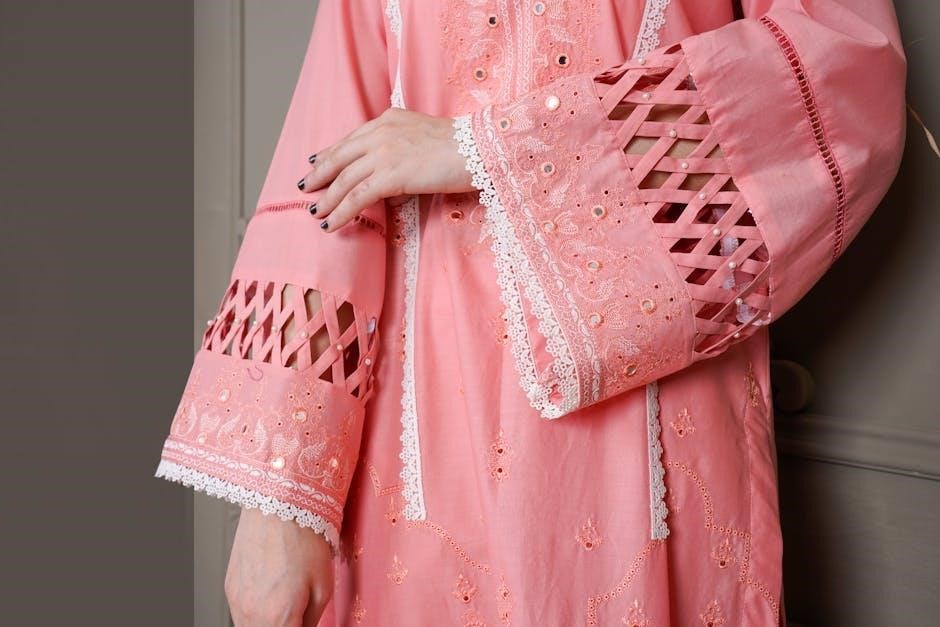
Types of Hand Embroidery Designs Available
Hand embroidery designs range from traditional patterns to modern creations, including cultural motifs, Redwork, Blackwork, and contemporary styles, all available as free downloadable PDFs․
Traditional and Cultural Patterns
Traditional and cultural hand embroidery patterns reflect the artistic heritage of various regions․ These designs often feature intricate motifs, symbols, and techniques passed down through generations․ Popular examples include Hungarian, Mexican, and Indian embroidery, each with unique stitching styles and meanings․ Many free PDFs offer these classic patterns, allowing embroiderers to connect with global cultures․ They are ideal for creating authentic, timeless pieces that celebrate cultural diversity․ Websites like DMC and independent designers provide these traditional designs, making it easy to explore and embroider cultural motifs with precision and historical significance․
Modern and Contemporary Designs
Modern hand embroidery designs blend bold colors, minimalist aesthetics, and fresh ideas, appealing to today’s creative embroiderers․ These patterns often feature geometric shapes, abstract motifs, and whimsical themes, allowing for self-expression and innovation․ Many contemporary designs incorporate pop culture, nature, and personal symbolism, making them versatile for various projects․ Websites like StitchDoodles offer unique modern PDF patterns, while independent designers share their artistic interpretations․ These designs cater to embroiderers seeking to experiment with fresh styles and techniques, keeping the craft dynamic and evolving for new generations of stitchers․
Specialized Designs (e․g․, Redwork, Blackwork)
Specialized embroidery designs like Redwork and Blackwork offer unique, striking patterns․ Redwork features bold red thread on white fabric, often depicting folk-art motifs․ Blackwork uses black thread to create intricate geometric or linear designs․ These styles are popular for their simplicity and visual impact․ Many free PDFs for Redwork and Blackwork are available online, allowing embroiderers to explore these techniques․ They are ideal for those seeking a modern twist on traditional embroidery, offering endless possibilities for creative expression while adhering to the constraints of these distinctive styles․
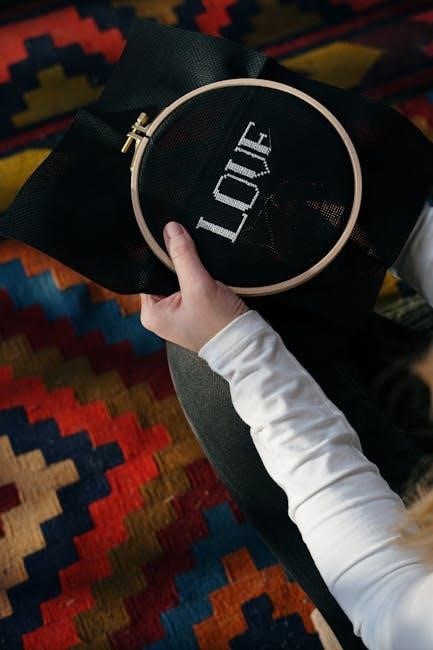
Tools and Materials Needed for Hand Embroidery
Hand embroidery requires essential tools like needles, hoops, and stabilizers․ Quality threads, fabric, and patterns are also vital for achieving beautiful, professional-looking results․
Essential Tools for Embroidery
The basic tools for hand embroidery include high-quality embroidery needles, hoops, and scissors․ Stabilizers like interfacing or water-soluble toppings prevent fabric distortion․ Good-quality threads ensure vibrant stitching․
Best Fabrics for Hand Embroidery
Cotton and linen fabrics are ideal for hand embroidery due to their even weave and durability․ Aida cloth is popular for cross-stitch, while silk and satin are suited for intricate designs․
Thread and Yarn Options
Embroidery threads come in various materials, with cotton and silk being the most popular for their vibrant colors and durability․ Specialty threads, like metallic or variegated, add unique effects․ Yarns, though bulkier, can create textured designs․ Choosing the right thread depends on the desired look and fabric type․ Many free PDF patterns recommend specific threads, ensuring compatibility and stunning results․ Experimenting with different threads and yarns can elevate your embroidery projects, making them truly personalized and visually striking․ Always consider the thread’s weight and colorfastness for long-lasting embroidery work․
Stabilizers and Hoops
Stabilizers are essential for maintaining fabric tautness, preventing distortion, and achieving smooth stitches․ Common types include cut-away, tear-away, and water-soluble stabilizers․ Embroidery hoops come in various sizes and materials, such as plastic, wood, or metal, to suit different projects․ Using the right hoop ensures even tension, while stabilizers protect the fabric during stitching․ Many free PDF patterns recommend specific stabilizers and hoops for optimal results, helping embroiderers achieve professional-quality designs with ease and precision․
Needles for Hand Embroidery
Choosing the right needle is crucial for hand embroidery․ Tapestry needles, with their blunt tips and large eyes, are ideal for most embroidery projects․ Sharp needles are better for piercing tightly woven fabrics, while beading needles are perfect for intricate details․ The size of the needle’s eye should accommodate the thread or yarn being used․ Durable materials, like stainless steel or gold-plated needles, resist rust and wear․ Using the correct needle ensures smooth stitching and prevents fabric damage, making the embroidery process more enjoyable and efficient․
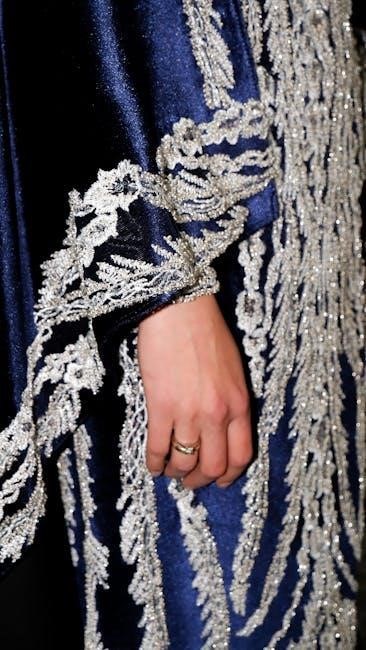
How to Choose the Right Design
Selecting the perfect embroidery design involves considering skill level, fabric type, and personal style; Ensure the pattern aligns with your experience and desired project outcome for best results․
Considering Skill Level
When selecting a hand embroidery design, it’s essential to consider your skill level․ Beginners should opt for simple patterns with basic stitches, while more experienced embroiderers can tackle intricate designs․ Free PDFs often include difficulty ratings, helping you choose appropriately․ Start with projects that match your expertise to ensure a satisfying experience․ As you gain confidence, gradually challenge yourself with more complex designs․ This approach fosters skills development and enjoyment in embroidery․ Always review pattern details to align with your current proficiency for the best outcomes․
Matching Design to Fabric Type
Choosing the right fabric for your embroidery design is crucial for a successful project․ Select patterns that complement the fabric’s texture and weight․ For example, intricate designs work well on stable fabrics like cotton or linen, while simpler patterns suit delicate materials․ Ensure the design’s complexity matches the fabric’s suitability for stitching․ Using stabilizers can enhance results on lighter fabrics․ Always review fabric recommendations in free PDFs to achieve the best outcome and avoid common issues during embroidery․ This step ensures your project looks its best and lasts longer․
Personalizing Your Design
Personalizing your embroidery design allows you to add a unique touch to your project․ Experiment with colors, patterns, and motifs to reflect your style․ Consider mixing elements from different free PDFs to create a one-of-a-kind piece․ Adding names, dates, or meaningful symbols can make your work extra special․ Use high-quality threads and stabilizers to ensure vibrant and durable results․ This creative freedom lets you tailor your design to suit your preferences, making every stitch truly personal and meaningful․ Personalization enhances the beauty and sentimental value of your embroidery project․
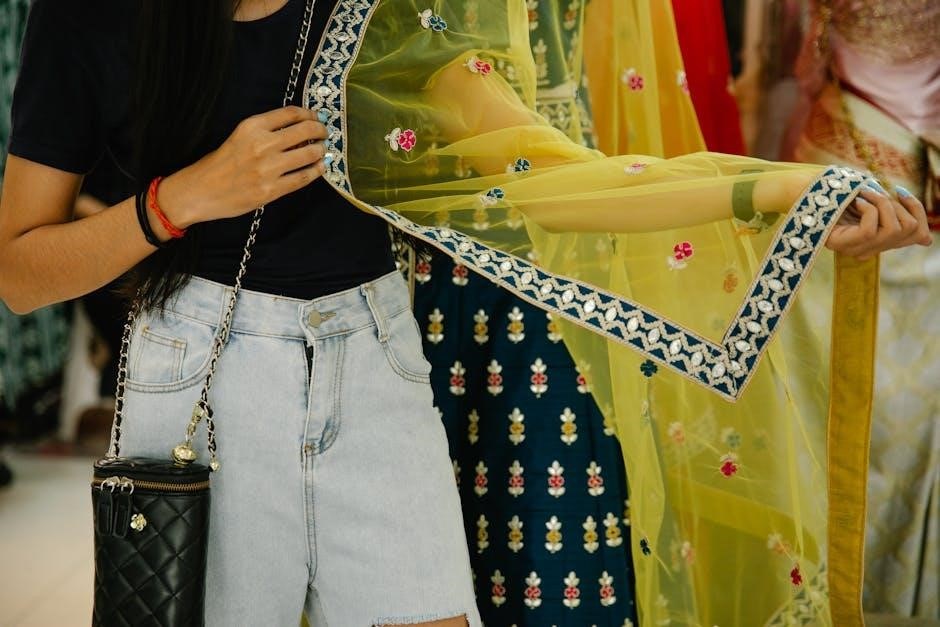
Downloading and Printing Your PDF
Free hand embroidery PDFs are readily available online, offering a variety of designs․ Download from reputable sources like DMC or StitchDoodles, then print on high-quality paper for clear patterns․
Steps to Download Free PDFs
To download free hand embroidery PDFs, visit reputable websites like DMC or StitchDoodles․ Search for your desired design, then click the download link․ Some sites may require signing up for free accounts; Once downloaded, ensure the PDF includes clear patterns and instructions․ Check your download folder to access the file․ Many platforms offer instant downloads, making it easy to start your embroidery project․ These PDFs often feature high-quality, printable designs suitable for all skill levels, ensuring a seamless embroidery experience․
Printing Tips for Embroidery Patterns
For best results, print embroidery patterns on high-quality paper or cardstock․ Ensure the design is scaled correctly to fit your fabric․ Use a printer setting that maintains clear lines and details․ If transferring the design, print it in reverse for iron-on methods․ Always preview the pattern to confirm sizing before printing․ Select a paper size that matches your needs, and ensure color consistency for accurate stitching guides․ Avoid resizing the pattern excessively, as it may distort the design․ Proper printing ensures your embroidery project starts with precision and clarity․
Transferring the Design to Fabric
Transferring embroidery designs to fabric can be done using iron-on transfers, tracing with a light box, or tracing paper․ Iron-on transfers are convenient and provide a clear outline․ For tracing, place the printed design under the fabric on a light box and draw the pattern with a pencil or marker․ Stabilizing the fabric with a hoop or interfacing ensures accuracy․ Use a fine-tip tool for detailed lines and avoid stretching the fabric during transfer․ This step is crucial for achieving precise, professional-looking embroidery results․ Proper transfer sets the foundation for flawless stitching and design execution․
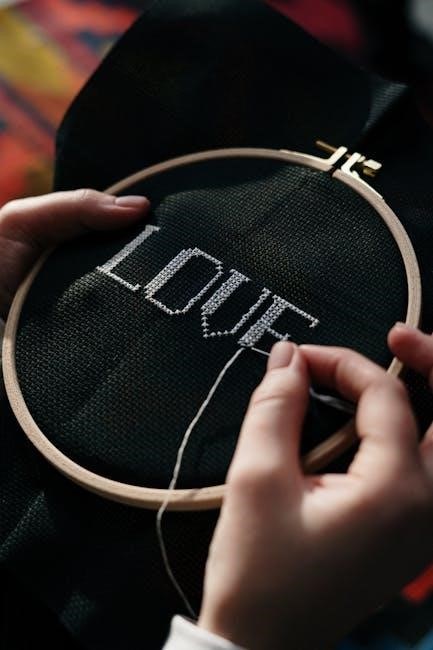
Tips for Beginners
Start with simple hand embroidery designs and practice basic stitches․ Use high-quality tools and stabilizers to ensure smooth stitching․ Begin with small projects to build confidence gradually․
Basic Stitches to Get Started
Mastering basic embroidery stitches is essential for any beginner․ Start with the running stitch, backstitch, and French knot, as these are foundational for most designs․ The running stitch is simple and versatile, while the backstitch is great for outlining․ The French knot adds decorative details․ Practice these stitches on scrap fabric to build muscle memory․ Many free PDF patterns include step-by-step guides for these stitches, making it easy to learn․ Once comfortable, you can explore more complex stitches and embellishments to enhance your embroidery projects․
Practice and Patience
Practice and patience are key to mastering hand embroidery․ Begin with simple designs and gradually progress to more complex patterns․ Consistent practice helps improve stitch control and overall quality․ Start with scrap fabric to build confidence before working on final projects․ Patience is essential, as embroidery is a meditative process requiring time and focus․ Celebrate small achievements and enjoy the creative journey, as each stitch brings your design to life․
Starting with Simple Designs
Starting with simple designs is ideal for beginners, helping build confidence and skills․ Choose patterns with basic stitches and minimal details․ Free PDF designs often include starter kits or tutorials․ Begin with small motifs like flowers or leaves, which are easy to embroider․ Use these designs to practice stitching techniques and fabric handling․ As you gain experience, gradually move to more intricate patterns․ Simple designs also make great embellishments for everyday items, allowing you to personalize your projects while honing your craft․
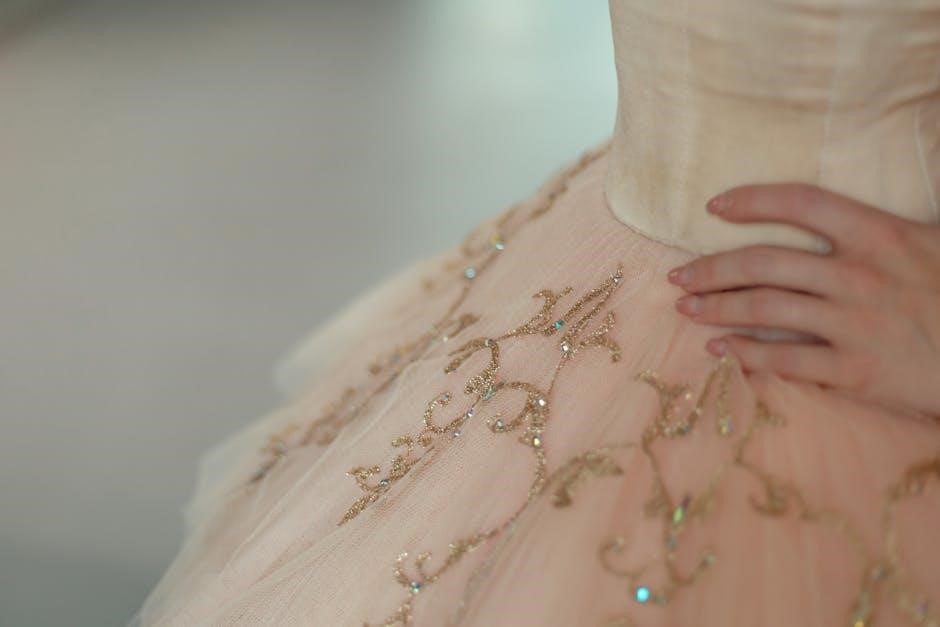
Common Mistakes and Troubleshooting
Common mistakes include incorrect stitch tension, choosing the wrong fabric, and poor thread selection․ Using stabilizers can help prevent fabric distortion during embroidery projects․
Incorrect Tension in Stitches
Incorrect tension in stitches is a common issue in hand embroidery, leading to puckered fabric or loose, uneven stitching․ Tight tension can cause fabric distortion, while loose stitches may unravel․ To fix this, ensure consistent thread pull and use a hoop for stability․ Adjusting needle size and fabric choice can also help maintain even tension․ Regularly checking your work and making adjustments early prevents major corrections later․ Proper tension ensures a professional finish and longevity of your embroidery design․
Choosing the Wrong Fabric
Choosing the wrong fabric is a common mistake in hand embroidery, as it can lead to uneven stitching, poor design visibility, or even damage to the material․ Selecting a fabric that is too thick or too thin can make stitching difficult and affect the overall appearance of your design․ Always opt for fabrics suitable for embroidery, such as cotton, linen, or Aida cloth․ Using stabilizers or hoops can also help maintain fabric stability․ Free PDF guides often include fabric recommendations, ensuring a smooth and successful embroidery experience for beginners and experienced embroiderers alike․
Thread and Color Selection Issues
Thread and color selection are critical in hand embroidery, as they directly impact the design’s aesthetic․ Using low-quality threads can lead to uneven stitching and color fading, while poor color choices may clash with the fabric or surrounding elements․ Choosing threads that match the fabric type and design theme ensures a professional finish․ Free PDF guides often include color charts and thread recommendations to help embroiderers make informed decisions․ Testing colors on scrap fabric before starting a project can prevent costly mistakes and ensure a vibrant, cohesive final piece․
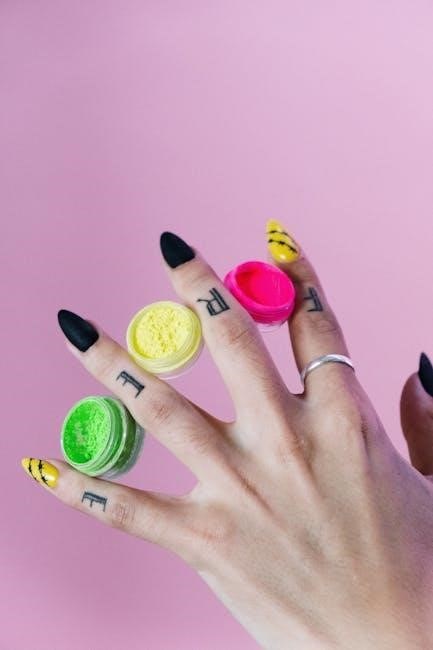
Inspiration and Creativity
Discover inspiration for hand embroidery through free PDF designs, exploring cultural patterns, modern trends, and personalized motifs․ Communities and forums also share creative ideas to spark your imagination․
Where to Find Inspiration
Find inspiration for hand embroidery by exploring free PDF designs from official brand websites, embroidery communities, and independent designers․ Websites like DMC and Etsy offer a wide range of patterns, while social media platforms like Pinterest and Instagram showcase stunning works․ Join embroidery forums and groups to discover unique designs and learn from others․ Additionally, cultural and traditional patterns from around the world can spark creativity․ Use these resources to explore diverse styles and techniques, helping you create meaningful and personalized embroidery pieces․
Customizing and Mixing Designs
Customizing and mixing hand embroidery designs allows for unique, personalized creations․ Combine elements from multiple free PDF patterns to create one-of-a-kind pieces․ Experiment with colors, themes, and styles by blending traditional motifs with modern aesthetics․ Use embroidery software to resize or rearrange designs before printing․ This flexibility enables embroiderers to tailor patterns to their skill level or project needs․ Mixing designs fosters creativity, making each embroidery piece truly original and reflective of personal style․
Sharing Your Work Online
Sharing your hand embroidery projects online connects you with a vibrant community of embroiderers worldwide․ Platforms like Instagram, Pinterest, and embroidery forums allow you to showcase your creations, gain feedback, and inspire others․ Many websites and communities dedicated to embroidery encourage members to post their work, fostering collaboration and creativity․ By sharing, you can discover new techniques, get ideas, and build a portfolio of your designs․ This digital exchange not only enhances your skills but also contributes to the growth of the global embroidery community․
